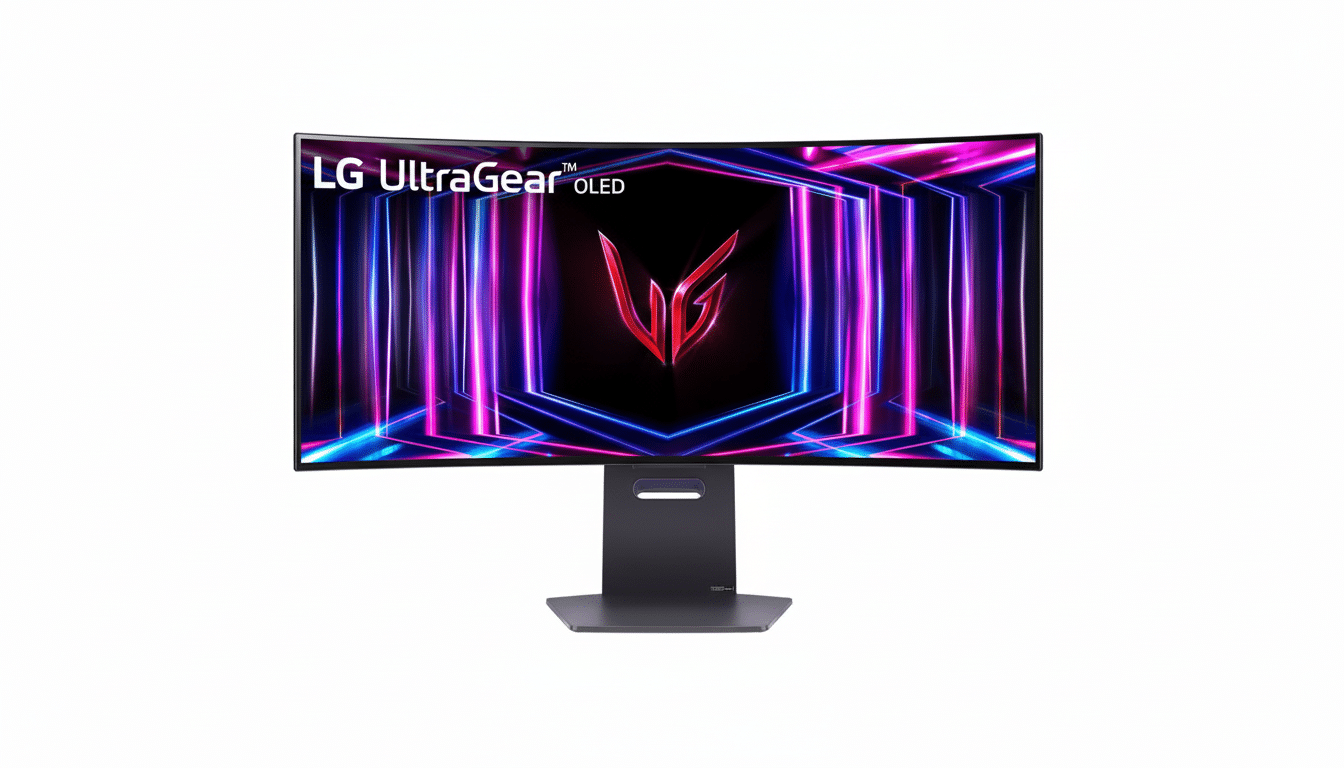The 34-inch LG UltraGear OLED curved gaming monitor falls to just $700 over at Amazon— a full savings of more than $700 from its usual list price of around $1,400. Still, for a 240Hz refresh-rate ultrawide OLED with lightning-fast response and animated lighting features, it’s a strong value.
Why This Price Drop Matters for OLED Gaming Monitors
OLED gaming monitors have demanded top dollar for self-emissive pixels, near-instant response, and class-leading contrast. Market watchers at Omdia and TrendForce have also noted the quick ramp in OLED monitor availability this year; however, decent ultrawide 240Hz models continue to be high-end options. It’s rare to see an LG UltraGear at this level of spec dip under $700, and it materially undercuts equivalent OLEDs, which usually hover between $800–$1,000 during sales.

And for those cross-shopping alternatives, even among Dell’s best-selling 34-inch QD‑OLED offerings, the models are typically topping out in the 165–175Hz range and not dipping nearly this low. LG’s offering here features an even more pronounced 800R curve together with a 240Hz WOLED screen, making it the better fit if you’re after a combination of esports play and cinematic single-player titles.
Key Specs That Elevate Gameplay and Visual Quality
It all begins with that 34-inch, 21:9 ultrawide canvas at a resolution of 3440×1440. That’s about 4.95 million pixels—much less than 4K’s 8.3 million, but still a good deal harder on your GPU at the mid- to high-end of things than regular ol’ 1440p. Incidentally, it can also take performance off a testy CPU at lower resolutions like Full HD.
An 800R curvature means the scene wraps around you more tightly than a typical 1500R or 1800R curve.
In the real world, racers, flight-sim pilots, and aimless open-world roamers alike get a better sense of presence without the distortion you’d see in flatter panels this wide.
And it’s in motion clarity that this monitor excels. 240Hz means that each frame is just 4.16ms apart, and the OLED’s 0.03ms gray-to-gray response reduces blur and overshoot to nothing we can detect from a normal viewing distance. In twitchy shooters like Valorant or Apex Legends, quick transitions should cut down on smearing along high-contrast edges and make tracking targets feel more precise. Variable refresh support through Nvidia G‑Sync Compatible and AMD FreeSync Premium helps keep frames tearing-free as frame rates change.
Color and contrast are the things OLED does best. Pixel-by-pixel lighting results in true blacks and impressive shadow detail that even full-array local dimming LCDs can’t always compete with. HDR10 support pulls on that contrast to create punchier highlights and richer mid-tones for games like Cyberpunk 2077 and Alan Wake 2, where moody lighting is everything.

Real-World Use Cases for Sim, Esports, and Creation
The 800R wraparound effect is great for sim racers: tracks are more readable, and corner apexes sit naturally in your peripheral vision. And ultrawide-friendly games such as Forza Horizon, F1, and Microsoft Flight Simulator benefit from a cockpit-like field of view that you can’t get on flat 16:9 screens.
If you’re within the competitive scene seeking butter-smooth performance, you’ll appreciate that 240Hz ceiling and just milliseconds’ worth of near-zero pixel persistence that an OLED can offer. Blur Busters and other motion-tech watchers have long pointed out how minimal latency and fast response reduce trailing artifacts—especially important for where you place the crosshair and for minor adjustments while moving quickly.
And creators who side-hustle in gaming profit, too. Wide-gamut coverage and high contrast translate to an easier time with color grading and more-than-doable timeline scrubbing, while the 3440×1440 resolution will fit a DAW or NLE comfortably. All told, just keep in mind that static UI elements are a reality you must handle carefully on any OLED.
Key Considerations Before You Buy This OLED Monitor
OLED care remains important. LG has added panel care like pixel shift and a compensation cycle to help curtail image retention. Don’t leave static HUDs or desktop windows parked for hours, and turn on the built-in protections. Refer to warranty language for burn-in coverage details in your region.
And of course, connectivity: DP 1.4 and dual HDMI 2.1 ports join a USB hub and VESA-mount support. That means modern consoles at 120Hz and PCs at the full 240Hz using DP. Make sure your GPU can push 3440×1440 at high frame rates—an upper-midrange card is a good baseline if you want to fully take advantage of the refresh rate.
Desk depth is important for an 800R curve. The curve is a little tighter, designed to more closely frame your view; just make sure your seating arrangement allows for comfortable eye relief and that your arm or stand can handle the width and weight of the panel.
Bottom Line: A Flagship-Level OLED Deal Under $700
When you factor in a curved OLED ultrawide with 240Hz, a properly steep 800R curve, and high-end VRR support for under $700, it’s unheard of. Price-tracking services indicate that deals at this level usually meet or beat earlier lows and do not last long. If you’ve been waiting for a flagship-feeling upgrade without the usual four-figure sting, this LG UltraGear offer is just the kind of value play that’s difficult to turn down.

